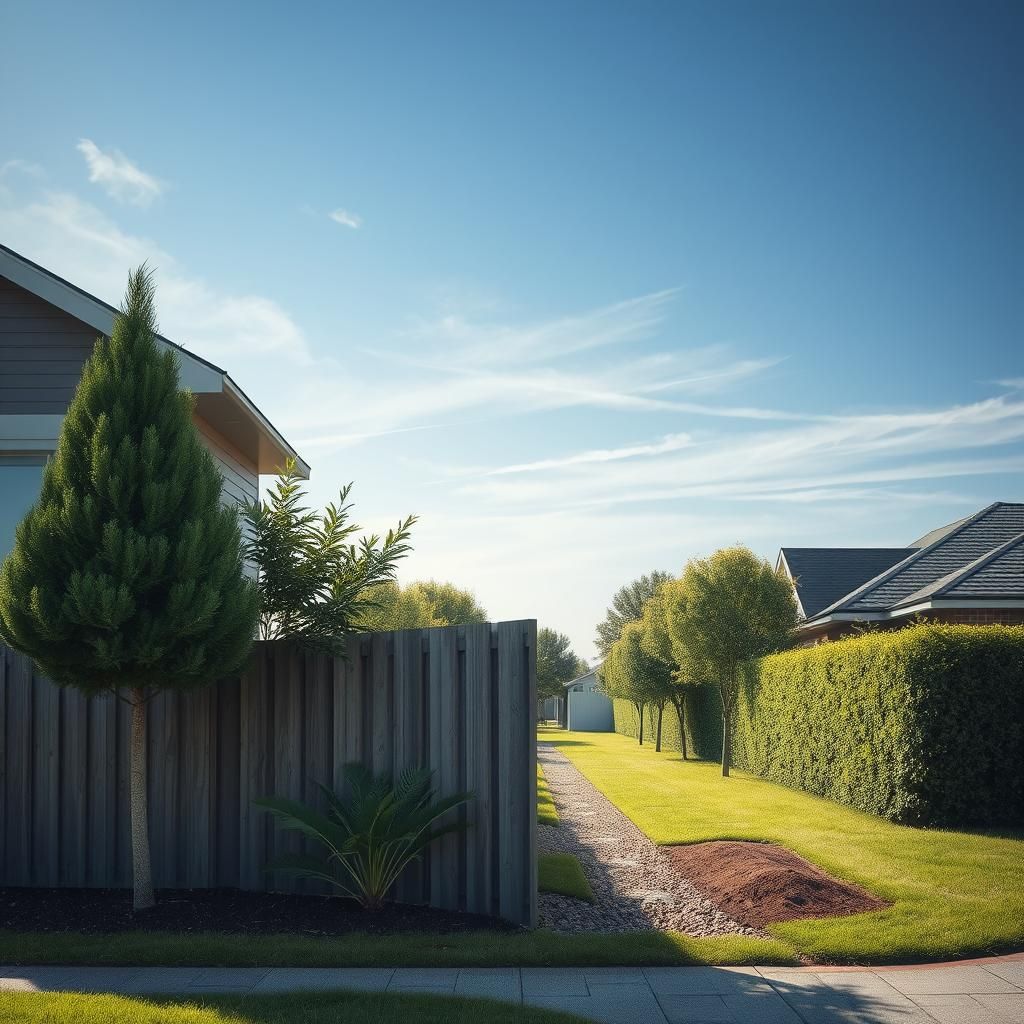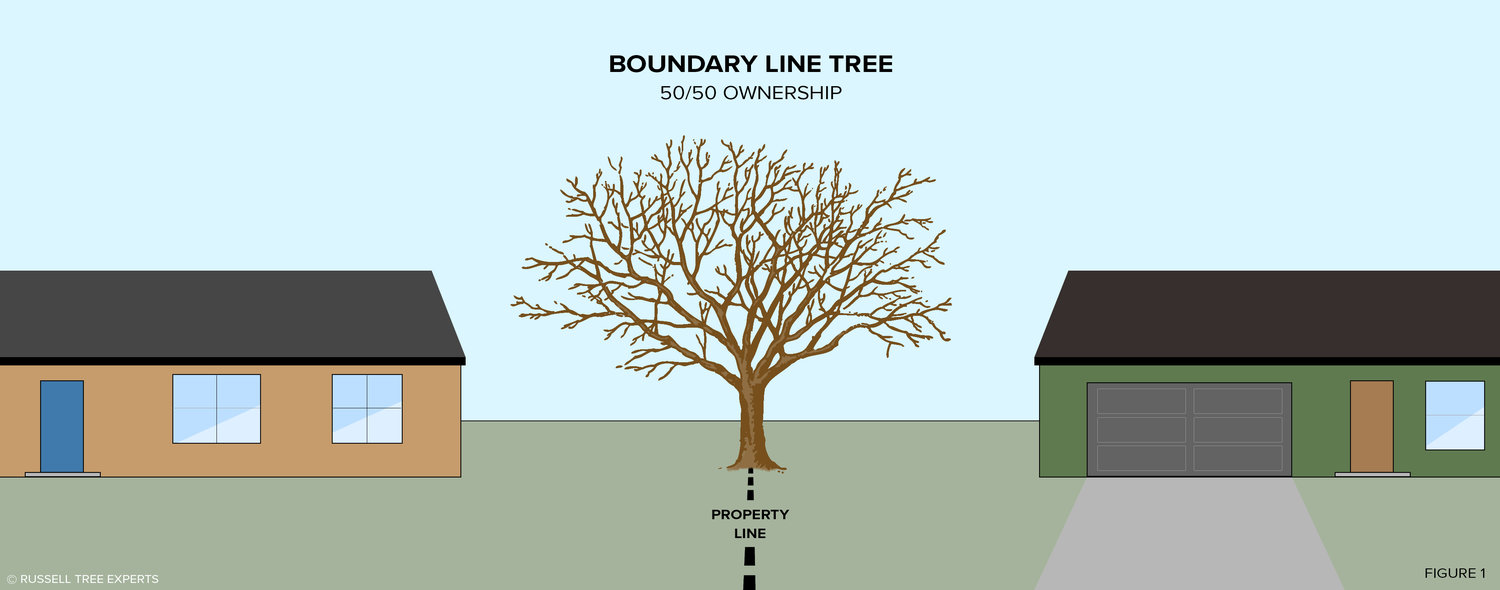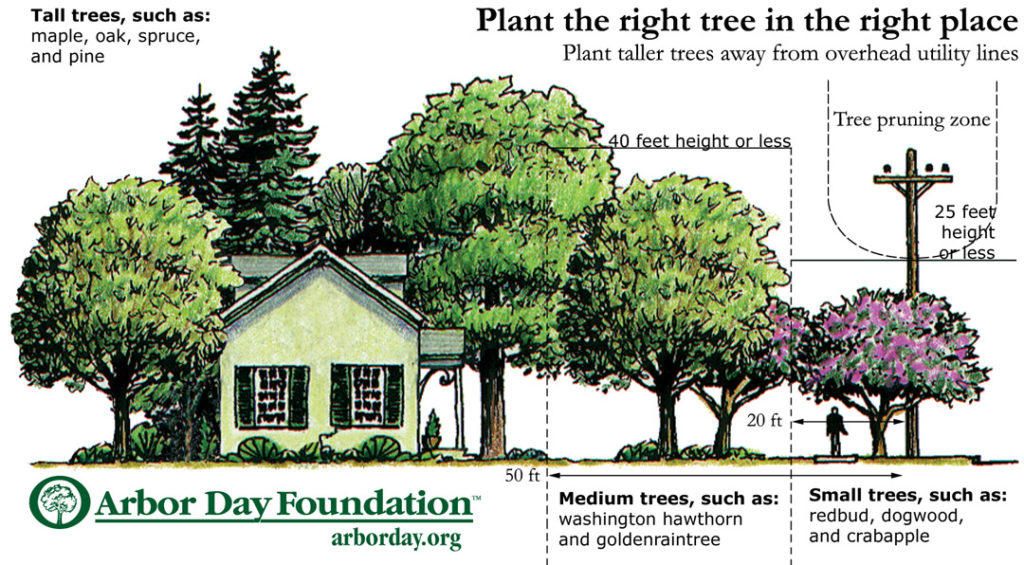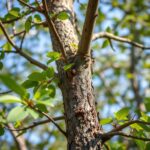Can a Neighbor Plant Big Trees Next to the Fence Between Our Houses? Understanding Your Rights and Regulations

When it comes to maintaining harmonious relationships with neighbors, few issues spark more debate than the planting of large trees near property lines. The question of whether a neighbor can plant these towering giants right next to the fence not only affects light, view, and aesthetics but can also encroach upon legal rights. Navigating local regulations and understanding your rights is crucial for homeowners facing this dilemma. This article delves into the factors that influence tree planting near property lines, exploring legal frameworks, neighborly considerations, and practical steps to address concerns about trees that may impact your living environment.
Can a Neighbor Plant Big Trees Next to the Fence Between Our Houses?
It is generally permissible for a neighbor to plant big trees next to the fence between your properties, but this action is subject to local laws and regulations. These regulations often pertain to property lines, setback requirements, and height restrictions for trees to minimize disputes and ensure that the trees do not encroach upon your property or block sunlight. It's advisable to check with your local zoning office or review any community guidelines before planting, as some areas may have specific rules about the types of trees that can be planted and their proximity to property boundaries. Additionally, courtesy communication with your neighbor can help prevent conflicts and promote amicable relations.
Understanding Local Laws
Local laws regarding tree planting can vary significantly, so it is essential to familiarize yourself with the specific ordinances in your area. Many municipalities have established rules that outline the permissible distance for planting trees relative to property lines. These laws aim to protect property owners from potential issues like root encroachment or overhanging branches. Understanding these regulations can help ensure that both you and your neighbor are within legal boundaries when it comes to landscaping choices.
Setback Requirements
Setback requirements are regulations that mandate how far a tree must be planted away from a property boundary. Typically, larger trees may require greater distances to avoid disputes over shading and root invasion. Check if your community has established specific setback distances to avoid potential conflicts with your neighbor. Following these requirements helps maintain a positive relationship with your neighbor while also ensuring that your property remains on good terms with local regulations.
Height Restrictions on Trees
Many areas enforce height restrictions for trees to prevent them from obstructing light or views from neighboring properties. If your neighbor plans to plant a large tree, it may be essential to review local guidelines on how tall the tree can grow. Taller trees might require trimming or removal if they interfere with neighboring properties, leading to potential disputes. Being aware of these restrictions can guide both you and your neighbor in making informed decisions about tree planting.
Potential Issues With Neighbors
Planting large trees can sometimes lead to conflict between neighbors, especially if the trees cause shading or other disruptions to the adjacent property. If a neighbor chooses to plant a tree too close to the shared fence, it might lead to disputes over who is responsible for maintenance or damage. Open lines of communication and discussing the potential impact of the tree can help avoid misunderstandings and ensure that both parties are comfortable with the landscaping decisions being made.
Importance of Communication
Effective communication with your neighbor regarding the planting of big trees is crucial. Discussing the intent to plant near the fence can help mitigate potential issues and foster a cooperative environment. It's beneficial to express any concerns related to light blockage, root encroachment, or general upkeep of the trees. Keeping an open dialogue can not only prevent conflicts down the line but also enhance neighborly relations, creating a more harmonious living situation for everyone involved.
| Aspect | Details |
|---|---|
| Local Laws | Regulations vary by municipality regarding tree planting next to property lines. |
| Setback Requirements | Guidelines specify minimum distances from property boundaries for planting. |
| Height Restrictions | Local laws may dictate maximum heights for trees to avoid shading problems. |
| Potential Issues | Large trees can lead to disputes over shading and maintenance responsibilities. |
| Communication | Discussing tree planting intentions can prevent conflicts and enhance relationships. |
How close to a neighbour's fence can I plant a tree?

When considering how close to a neighbor's fence you can plant a tree, several factors come into play, including local laws, tree species, and the potential impact on your neighbor's property. Generally, you should plant trees at a distance that ensures they will not interfere with the fence or your neighbor’s property, while also allowing the tree room to grow.
Local regulations often mandate a specific distance that must be maintained from property lines. To avoid potential disputes and complications, it's advisable to consult your local zoning or land use office for the precise rules applicable to your location. However, a common recommended distance is often anywhere from 3 to 10 feet, depending on the tree's size and growth habits.
Understanding Property Lines
Understanding property lines is crucial before planting. Property lines define the boundaries of your land and determine where you may legally plant trees.
- Survey Your Property: If you are unsure where your property line lies, a land survey may be necessary.
- Consult Records: Check local property records or consult with a title company to clarify exact boundaries.
- Communicate with Neighbors: Discuss property lines with your neighbor to mutually agree on planting decisions.
Local Laws and Regulations
Local laws and regulations have a significant impact on how closely you can plant a tree to your neighbor's fence.
- Check Zoning Laws: Many municipalities have zoning laws that stipulate required distances for planting near property lines.
- Know Tree Species Restrictions: Some municipalities have specific rulings regarding which types of trees can be planted, based on their potential height and spread.
- Homeowners' Association Guidelines: If you live in a community with a homeowners' association, be sure to check their rules regarding tree planting.
Impact on Neighboring Properties
The potential impact of a tree on neighboring properties is a key consideration in deciding how close to plant.
See also:
- Root System: Consider how large the tree's roots will grow and whether they may disrupt fences or foundations.
- Canopy Spread: Be aware of how wide the tree's branches will extend, as this could overhang a neighbor's property.
- Leaves and Debris: Consider the mess that falling leaves or fruit can create on neighboring properties.
Choosing the Right Tree
Choosing the right type of tree is vital for ensuring harmony with neighbors.
- Small vs. Large Trees: Determine if a small tree will suffice, reducing the chance of interference with the neighbor's fence.
- Growth Rate: Consider how quickly the tree will grow; faster-growing trees may require more space from boundaries.
- Pest and Disease Resistance: Select trees that are less likely to attract pests that could affect neighboring properties.
Best Practices for Planting
Following best practices when planting trees can help maintain a positive relationship with neighbors.
- Maintain Clear Communication: Inform your neighbor of your planting plans to avoid misunderstandings.
- Document Your Planting: Keep records of the planting date and tree species in case any disputes arise.
- Regular Maintenance: Commitment to regular tree maintenance can prevent overgrowth that may impact neighbors.
How close to your property line can a neighbor plant a tree?

The distance a neighbor can plant a tree from your property line largely depends on local zoning laws and ordinances. Typically, these regulations are set to prevent disputes over encroachments and to ensure that all plants can grow without infringing on neighboring properties. In many areas, the general rule is that trees should be planted at least three to ten feet away from the property line, depending on the species and height of the tree when fully grown. Larger trees usually require more distance to avoid potential problems like root encroachment, shading, and falling branches. It is always advisable to check with your local government or homeowners' association for specific regulations governing tree planting.
Local Zoning Laws
Local zoning laws dictate how close a tree can be planted to property lines. Understanding these regulations is crucial for avoiding conflicts. Common provisions include:
- Setbacks, which specify the minimum distance from the property line.
- Specific restrictions for certain species due to their mature size.
- Potential fines for planting trees that violate these regulations.
Types of Trees and Their Requirements
Different types of trees have varying planting requirements depending on their growth. It's essential to consider that:
- Smaller trees can often be planted closer to the property line than larger trees.
- Evergreens typically require more space due to their height and width as they mature.
- Fruit-bearing trees may also have specific spacing requirements to ensure easy access and prevent damage.
Neighbor Relations and Communication
When a neighbor decides to plant a tree, maintaining good relations can be vital. Open communication helps with:
- Discussing potential impacts on your property, such as shade or debris.
- Resolving concerns before they escalate into disputes.
- Reaching mutual agreements on tree placement for both neighbors' benefit.
Potential Legal Consequences
Failing to adhere to property line regulations can lead to legal challenges. The implications can be serious, including:
- Disputes that require mediation or legal intervention.
- Possible removal of the tree at the neighbor's expense.
- Long-term damage to neighborly relations, which could affect community harmony.
Damage and Liability Concerns
Trees planted too close to property lines can pose problems that lead to liability issues. Homeowners should be aware of:
- Potential damage from falling branches or roots, which can affect both properties.
- Liability for injuries or damages caused by poorly maintained trees.
- Insurance implications that can arise from disputes over property lines and tree placement.
Can you plant trees between houses?

Planting trees between houses can be a beneficial practice in many residential areas, but there are several factors to consider before proceeding. It's important to evaluate the space available, the type of trees, and any local regulations that might apply. Trees can enhance the aesthetic appeal of a neighborhood, provide shade, and contribute to biodiversity. However, improper placement can lead to issues such as root encroachment on properties, interference with structures, and potential hazards during storms.
Understanding Property Lines
When considering planting trees between houses, it’s crucial to understand the property lines. Each property owner has specific rights and responsibilities regarding their land. Misplacing a tree too close to a property line can lead to disputes with neighbors.
- Consult local property boundary laws to understand your rights.
- Communicate with your neighbor about tree placement to avoid conflicts.
- Consider having a professional surveyor mark the property lines.
Choosing the Right Trees
Not all trees are suitable for planting between houses. It’s essential to select trees that will thrive in the space available and won’t become a nuisance as they grow.
See also:
- Opt for native tree species, which are often better suited to local conditions.
- Select trees with a smaller canopy size to minimize shading and maintenance issues.
- Avoid trees with aggressive root systems that can damage foundations or sidewalks.
Local Regulations and Zoning Laws
Before planting, it’s vital to check local regulations regarding tree planting. Many municipalities have specific ordinances concerning the distance trees must be planted from property lines.
- Review any zoning laws that dictate tree placement in residential areas.
- Check for any homeowners' association (HOA) rules that may affect your decision.
- Inquire about required permits for planting certain tree species.
Potential Issues with Neighbors
Trees planted too close to property lines can lead to disputes with neighbors, as they may encroach upon another's land or shade their property.
- Discuss your plans with neighbors to gauge their feelings on tree planting.
- Document any agreements made regarding the maintenance or responsibility for the trees.
- Consider planting non-invasive species to reduce disputes over encroachment.
Maintenance and Care
Once the trees are planted, ongoing maintenance is necessary to ensure they remain healthy and do not become a nuisance to neighboring properties.
- Regularly inspect trees for pests and diseases.
- Keep an eye on growth patterns to ensure the canopy does not overhang onto neighbor’s properties.
- Prune trees as needed to maintain a safe distance from structures.
How close can a large tree be to a house?

The distance a large tree should be planted from a house can vary based on several factors, including the tree's species, size at maturity, root structure, and the local climate. Generally, it is advised to plant large trees at least 15 to 20 feet away from the home to minimize potential risks. Here are some key considerations:
Tree Species and Growth Rate
The species of the tree greatly influences how close it can be to a home. Some trees grow very large and have extensive root systems, while others remain smaller.
- Fast-growing trees like willows might need more distance as their roots spread quickly.
- Slow-growing trees, such as oaks, may be more manageable and can be planted closer.
- Consider if the tree is deciduous or evergreen, as this affects shade and debris near the house.
Root Structure Considerations
The root structure of a tree plays a crucial role in determining how close it can be to a building. Certain trees have roots that spread wide, which can affect the foundation of a home.
- Surface roots can lift sidewalks and driveways, leading to potential hazards.
- Invasive roots may compromise the integrity of basement structures.
- Plant trees with a less aggressive root system if close proximity is desired.
Branching Patterns and Height
The height and branching pattern of a tree can impact how close it should be to a house. Overhanging branches can pose risks during storms.
- Tall trees should be planted far enough to prevent branches from falling on the house.
- Ensure that branches do not interfere with the roof or gutters.
- Consider pruning regularly to maintain a safe distance over time.
Local Climate and Environmental Factors
Regional climate can affect tree health and growth, which in turn influences how close a tree can be to a house.
- In regions with heavy storms, trees should be planted further from the house.
- Consider soil quality and nutrient availability when deciding on proximity.
- Planting trees in windy areas may require additional distance to prevent damage.
Insurance and Local Regulations
Different areas may have specific regulations regarding tree planting near buildings. Insurance policies may also influence planting decisions.
- Check with local zoning laws for guidelines on tree planting near structures.
- Some insurance companies may require trees to be a certain distance to mitigate risks.
- Follow best practices to protect your property and comply with local ordinances.
Questions from Our Readers
Yes, your neighbor can plant large trees next to the shared fence, but they must adhere to local laws and regulations regarding property lines and height restrictions. It's advisable to check with your local zoning office for specific guidelines.
What should I do if the trees obstruct my sunlight?
If the trees planted by your neighbor obstruct the sunlight to your property, you may be able to address the issue through discussions with them or by checking local ordinances. In some cases, there might be specific rules governing tree height to prevent such issues.
Are there specific distances that trees must be planted from the fence?
Yes, many local laws stipulate a specific distance that trees must be planted from property lines or fences. This distance can vary, so it's important to consult your local zoning laws to understand the requirements in your area.
See also:
Can I legally trim or remove my neighbor's trees if they affect my property?
Generally, you cannot legally trim or remove your neighbor's trees without their permission, even if they affect your property. If you're facing issues, it's best to discuss it with your neighbor or seek legal advice to understand your rights and options.

If you want to read more articles like Can a Neighbor Plant Big Trees Next to the Fence Between Our Houses? Understanding Your Rights and Regulations, we recommend you check out our Landscaping category.
Leave a Reply
Related Articles